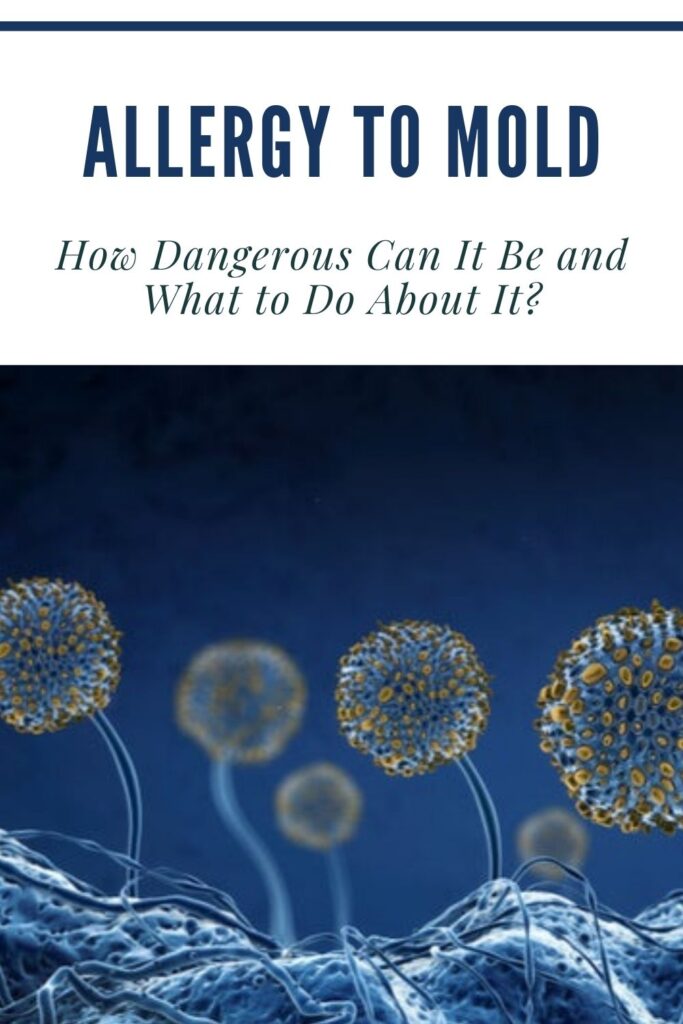An allergy to mold is not that common but it exists, so you need to recognize it on time and treat it before it gets worse! Find out more!
Up to a third of the world’s population has allergies. Among the substances that cause allergies are fungi and their different varieties.
A large part of the world population suffers or has suffered from diseases that cause an allergic picture. Allergies to fungi are less common than those caused by pollen or skin flakes from pets, but they do exist.
What can be done to prevent symptoms arising from these allergens? Moisture is one of the allies of mold, and controlling this aspect is a pillar of prevention. In humid environments, fungi spread, forming colonies that, in the long run, release substances capable of entering the human respiratory tract.
Knowing the pathogen
Fungi are a diverse group of multicellular organisms that includes molds, yeasts, and mushroom-producing organisms. The spores of the mushrooms enter the human respiratory tract and generate a rather complex process.
The case of molds is different:
- Mold is a fungus that is present both outdoors and in humid places with low light.
- Many of its species are microscopic and reproduce and propagate through spores.
These spores move through the air, which is why they are called aerogenic organisms and are imperceptible and tiny in size, just like pollen.
Any unknown element that can enter the respiratory tract can be a potential allergen and the fungal spores meet all the requirements. Therefore, people who suffer from this condition are considered to be allergic to humidity.
Symptoms of allergy to mold
An allergy to mold causes the same symptoms as any other allergic reaction. Here we show you the most obvious signs, collected by the Mayo Clinic website:
- Sneezing.
- Stuffy nose.
- Runny nose.
- Itching in the throat, nose and eyes.
- Crying eyes.
Depending on the immune response of the allergic person, the clinical picture can be mild or moderate. If you start sneezing and feel a stuffy nose when entering a basement or visiting a rain forest, it is quite possible that you have a fungus allergy.
Some of the more common molds that cause allergies include Alternaria, Aspergillus, Cladosporium, and Penicillium. Of course, being allergic to one gender does not imply that there are reactions to the rest of the fungal families.
How to combat a fungal allergy?
Molds and humidity are an inseparable pairing. Therefore, to eliminate the symptoms of this type of allergy, it is essential to be very careful with the humidity conditions of the home:
- Furniture surfaces that are frequently damp, such as sinks, showers or toilets, should be cleaned in the usual way. That a fungus is not visible at first glance does not mean that it is not present.
- Fungus spores can be trapped in dust particles and remain active despite being in dry environments. To maximize caution, it is advisable to vacuum the dust with vacuum cleaners with HEPA filters that retain microparticles as much as possible.
- There are dehumidifying devices that are capable of increasing the dryness of the home, especially in rural environments with high humidity.
- Encouraging drainage of groundwater and good ventilation also reduce humidity.
- Dehumidify the environment
- Since molds use moisture to survive, the use of dehumidifiers is helpful.
Care and prevention
All the measures listed above are essential to keep a home free of fungal spores, but on the street this cannot be avoided. In rural and poorly urbanized areas, the only possible prevention against this type of allergy is knowing how to identify the symptoms and take the treatment prescribed by the allergist.
As with any allergic reaction, nasal corticosteroids and antihistamines are the best allies when it comes to alleviating this symptomatology. It is not about defeating the disease, but about knowing how to live with it and minimize its impact on a day-to-day basis.
If you suspect that you may have a mold allergy, a doctor will answer your question with a skin prick. This allergy test will reveal which allergens you are susceptible to; some will be easier to control and others not so much, but knowing them is the first step to prevent.
Don’t forget to SHARE everything you learned about allergy to mold with your friends and family on your social networks!

